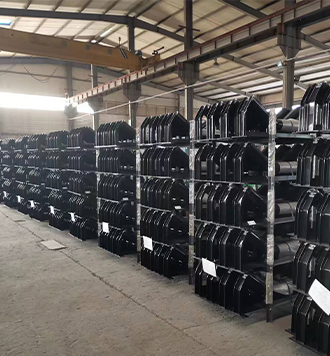 Afrikaans
Afrikaans  Albanian
Albanian  Amharic
Amharic  Arabic
Arabic  Armenian
Armenian  Azerbaijani
Azerbaijani  Basque
Basque  Belarusian
Belarusian  Bengali
Bengali  Bosnian
Bosnian  Bulgarian
Bulgarian  Catalan
Catalan  Cebuano
Cebuano  Corsican
Corsican  Croatian
Croatian  Czech
Czech  Danish
Danish  Dutch
Dutch  English
English  Esperanto
Esperanto  Estonian
Estonian  Finnish
Finnish  French
French  Frisian
Frisian  Galician
Galician  Georgian
Georgian  German
German  Greek
Greek  Gujarati
Gujarati  Haitian Creole
Haitian Creole  hausa
hausa  hawaiian
hawaiian  Hebrew
Hebrew  Hindi
Hindi  Miao
Miao  Hungarian
Hungarian  Icelandic
Icelandic  igbo
igbo  Indonesian
Indonesian  irish
irish  Italian
Italian  Japanese
Japanese  Javanese
Javanese  Kannada
Kannada  kazakh
kazakh  Khmer
Khmer  Rwandese
Rwandese  Korean
Korean  Kurdish
Kurdish  Kyrgyz
Kyrgyz  Lao
Lao  Latin
Latin  Latvian
Latvian  Lithuanian
Lithuanian  Luxembourgish
Luxembourgish  Macedonian
Macedonian  Malgashi
Malgashi  Malay
Malay  Malayalam
Malayalam  Maltese
Maltese  Maori
Maori  Marathi
Marathi  Mongolian
Mongolian  Myanmar
Myanmar  Nepali
Nepali  Norwegian
Norwegian  Norwegian
Norwegian  Occitan
Occitan  Pashto
Pashto  Persian
Persian  Polish
Polish  Portuguese
Portuguese  Punjabi
Punjabi  Romanian
Romanian  Russian
Russian  Samoan
Samoan  Scottish Gaelic
Scottish Gaelic  Serbian
Serbian  Sesotho
Sesotho  Shona
Shona  Sindhi
Sindhi  Sinhala
Sinhala  Slovak
Slovak  Slovenian
Slovenian  Somali
Somali  Spanish
Spanish  Sundanese
Sundanese  Swahili
Swahili  Swedish
Swedish  Tagalog
Tagalog  Tajik
Tajik  Tamil
Tamil  Tatar
Tatar  Telugu
Telugu  Thai
Thai  Turkish
Turkish  Turkmen
Turkmen  Ukrainian
Ukrainian  Urdu
Urdu  Uighur
Uighur  Uzbek
Uzbek  Vietnamese
Vietnamese  Welsh
Welsh  Bantu
Bantu  Yiddish
Yiddish  Yoruba
Yoruba  Zulu
Zulu Understanding the Design and Functionality of Troughing Idlers in Belt Conveyors
Understanding Belt Conveyor Troughing Idlers
Belt conveyors are vital components in various industries where the transportation of materials is needed. Among the essential parts of these systems are the troughing idlers. These components play a crucial role in ensuring the effective and efficient operation of the conveyor systems. In this article, we will discuss the concept of troughing idlers, their types, functions, and advantages, along with their importance in belt conveyor systems.
What are Troughing Idlers?
Troughing idlers are roller assemblies used to support the conveyor belt in a trough shape as it travels along the conveyor system. Unlike flat idlers, which merely provide surface contact, troughing idlers allow the conveyor belt to form a concave shape. This design is essential for confining the bulk materials being transported, minimizing spillage and enhancing operational safety.
Types of Troughing Idlers
1. Standard Troughing Idlers These are the most common type of idlers and come in various angles, generally ranging from 20 to 45 degrees. The angle of troughing impacts the capacity and stability of the conveyor system.
2. Return Idlers These idlers support the belt as it returns to the head or discharge pulley. By keeping the belt aligned, return idlers help maintain the tension and facilitate smooth operation.
3. Impact Idlers Located at loading points, these idlers are designed to absorb the impact of falling materials. They have a rubber cushioning or resilient design that protects the belt from damage.
4. Training Idlers Also known as tracking idlers, these help keep the belt aligned and prevent it from drifting off the designated path. Proper alignment prolongs the life of both the conveyor belt and the idlers.
Functions of Troughing Idlers
Troughing idlers serve several critical functions in a belt conveyor system
belt conveyor troughing idlers

- Support and Stability Idlers provide the necessary support for the conveyor belt, ensuring that it remains stable as it carries various loads. The trough shape allows for maximum load distribution, contributing to the overall stability of the conveyor system.
- Material Control By forming a trough, these idlers help contain the bulk material, significantly reducing spillage
. This containment is essential in maintaining a clean working environment, minimizing waste, and improving efficiency.- Reduction of Wear Troughing idlers are designed to minimize the wear on the conveyor belt. The curvature helps prevent belt sagging and reduces the likelihood of damages, ultimately extending the lifespan of the conveyor system.
- Facilitating Movement The rollers in troughing idlers permit smooth movement of the conveyor belt, thus reducing the frictional forces that can hinder efficiency. This smooth operation is vital when handling heavy loads.
Advantages of Using Troughing Idlers
1. Increased Capacity The design of troughing idlers allows for higher load capacities compared to flat idlers. This feature is particularly beneficial in heavy-duty applications.
2. Enhanced Safety By confining materials, troughing idlers minimize the risk of spills, contributing to a safer working environment for employees.
3. Operational Efficiency The reduced friction and superior material control improve the efficiency of the belt conveyor system, leading to lower operational costs over time.
4. Customizability With various types and angles available, troughing idlers can be tailored to meet the specific needs of different conveyor systems, making them versatile components.
Conclusion
In summary, troughing idlers are a fundamental aspect of belt conveyor systems, offering support, stability, and efficiency. Their design not only enhances the operational capacity of the conveyor but also ensures the safe and effective transport of materials. Given their advantages and essential functions, investing in high-quality troughing idlers is crucial for any industry reliant on conveyor systems. As industries continue to evolve, the role of these idlers will remain significant, providing solutions to complex logistical challenges in material handling.
-
Revolutionizing Conveyor Reliability with Advanced Rubber Lagging PulleysNewsJul.22,2025
-
Powering Precision and Durability with Expert Manufacturers of Conveyor ComponentsNewsJul.22,2025
-
Optimizing Conveyor Systems with Advanced Conveyor AccessoriesNewsJul.22,2025
-
Maximize Conveyor Efficiency with Quality Conveyor Idler PulleysNewsJul.22,2025
-
Future-Proof Your Conveyor System with High-Performance Polyurethane RollerNewsJul.22,2025
-
Driving Efficiency Forward with Quality Idlers and RollersNewsJul.22,2025





























